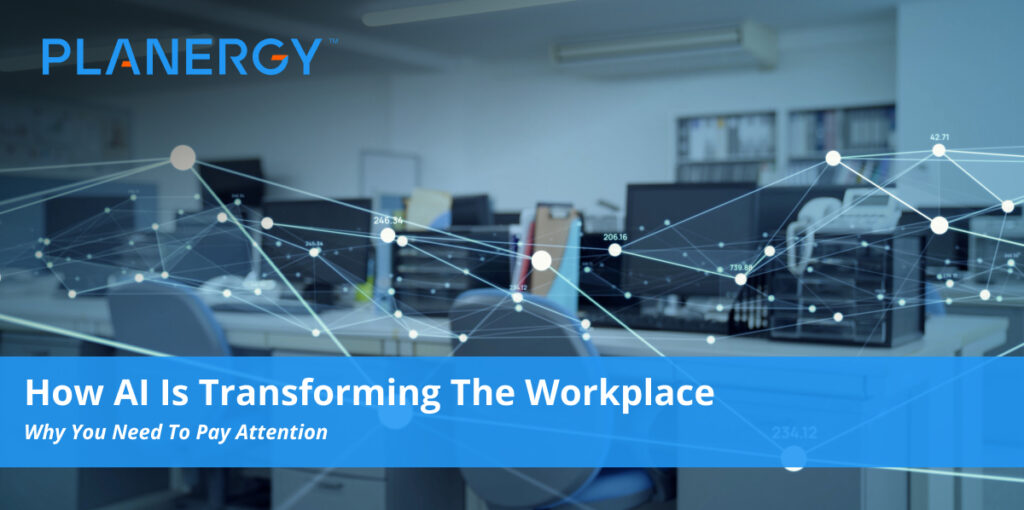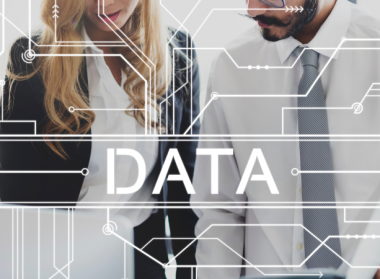Thanks to a world where even the refrigerator in the company breakroom can be a source of data, businesses now have access to more information than ever before.
The sheer volume of data, has until recently, meant that many organizations have information they just don’t know what do to with.
Thanks to artificial intelligence (AI), it’s possible to create even more efficient and productive analytics for improved decision-making.
Over the course of the next year, companies expect to have anywhere from 10 to 1,000 times more data than they do today.
Without AI to help analyze it, organizations will struggle to develop actionable insights from it that will guide them in the right direction.
Let’s take a closer look at how artificial intelligence is transforming the workplace.
Recruiting, Onboarding, and Retaining Talent
AI technology is ideal for the hiring process. New technologies make it easier for human resources to find the “needle in the haystack” because it can quickly review resumes and social media profiles.
From there, it can isolate a smaller list of the best potential candidates. At that point, artificial intelligence can interact with the candidates to ensure the company has a steady pipeline of top talent.
After AI has identified the candidate pipeline or has a large group of people who applied to a job, AI can assist in choosing the right person for the job. Many AI tools help recruiters hire remote workers.
AI is helpful to assess candidate skills, organizational fit, and personality.
After you hire the right employee, training them is a crucial part of their success.
Through the use of AI-enabled chatbots and other technology, it is easier to help new hires settle into the role and get a grasp of the company culture and more.
AI technology also makes it easier to continue ongoing training for most employees.
Personalized training and professional development programs can help with retaining employees.
With the cost of employee turnover increasing, often costing more than an employee’s salary to replace them, investing in the employee experience is a crucial component of long-term success.
Workplace Optimization
Any customer touchpoint, device, process, or infrastructure can be made “smart” by adding internet-connected sensors.
The options available on the market today continue to grow, as we expand the internet of things. From smart plugs (plugged into a power outlet) to smart light bulbs, door locks, security cameras, thermostats, appliances, etc., you can control spending and save money on utilities.
Many people are using technology like this in their homes to avoid heating or cooling rooms when no one is home.
Optimizing this in your workplace may also help you qualify for programs with your utility companies.
With AI and sensors, you can improve lighting control, temperature control, space management, and room control.
By creating an optimal, personalized workplace environment for your staff, you’ll be able to boost productivity and employee engagement.
When your staff is comfortable, rather than too cold, too hot, or stuck in a room that isn’t lit properly, they will definitely not be as productive as possible.
Remote Working
The COVID pandemic isn’t going anywhere any time soon, and it will still be a while before a vaccine is widely available to the general public.
Remote workers can keep the company running as smoothly as possible while keeping themselves safe.
Remote artificial intelligence helps more than finding the people to fill positions. Remote work often deals with a number of time-consuming repetitive tasks and administrative tasks, which can take a lot of time and effort.
AI can step in to get it done fast. Through machine learning and automation, AI can use algorithms to handle the monotonous tasks so that the human staff can focus their attention on other tasks that positively affect the bottom line.
Artificial intelligence makes telerobotics possible, and we can expect to see more of it in the near future. In this case, machines are remotely operated by humans.
These robots can be controlled from a distance and have the potential to completely change the workplace, especially if they’re integrated with virtual reality.
With telerobotics, a number of positions that aren’t currently considered remote, such as a paramedic and various other healthcare positions, or construction worker, could easily become remote.
Staff Collaboration
In the future, companies will have stronger partnerships between humans and machines. Collaboration between human and machine will increase productivity and revenue.
AI will make it easier to collect, find, share, and maintain information among staff spread across the globe.
This is especially crucial for larger organizations, because the bigger the company, the more difficult it becomes to find the right information for the right employee.
Through AI, semantic search, and natural language processing, it will be easier for people to find what they are looking for.
AI also makes it easier to connect disparate, relevant data sources to keep your knowledgebase up-to-date and offer data metrics to help your management and employees work together The easier it is for staff to find the right knowledge, the easier it becomes to collaborate.
You can also use AI within your organization to create a chatbot for internal use. by giving the AI agent enough sources of data, the chatbot will understand the context and can quickly answer a question.
Culture and Leadership
If your company culture isn’t already focused on being data-driven, your leadership needs to work to adjust it. In a data-driven culture, actions are taken in real-time.
Employees are empowered, and decisions are automated. With AI, decision-making improves throughout the entire organization, so you can better understand the opportunities you should grab immediately.
In the future, AI will replace the need for human decision-making in favor of automated decision-making. This will make it possible for companies to automatically choose the best marketing message instead of needing a marketing team to do it for them.
Because organizations will give their employees more information, power is more equally distributed so that employees are empowered.
The power shift is not only required to fully benefit from big data analytics, but it will also significantly change your company culture.
Intelligent Procurement
AI can also be helpful in procurement. AI can alert the company and suppliers to supply chain disruptions, recognize and flag supplier compliance issues, and quickly find instances of fraud.
Digital technology and advanced data analytics will support procurement so that buyers can better identify opportunities to save money and boost profits.
The more money procurement can save, the more value they offer the entire company. AI’s data analysis makes it possible to find hidden opportunities and make it easier to get an accurate view of total spending.
The procurement function is full of menial tasks. AI will enable greater automation of the menial tasks, so that things become actionable within seconds to minutes, rather than hours or days.
Automating invoice processing and purchase order approval has the greatest benefit to companies.
Ai can take care of checking invoices against contracts, record keeping, three-way matching invoices to purchase orders to goods receipts. Ultimately, this cuts down on fraud, to save time and money.
With these tasks taken care of, procurement professionals can spend more time developing supplier relationships and working with internal stakeholders to build more value for the organization.
AI’s benefit in procurement goes far beyond the transaction itself. It helps position procurement in a more strategic role for decision making. In today’s business environment, procurement is often considered a support function. Though it is an important one, it is not often given its due as a strategic function.
Increased Productivity
When AI augments humans doing their jobs, productivity increases. Robots don’t need breaks, don’t get sick, and can work 24 hours a day 7 days a week without burnout.
Because of this, organizations that have built AI in their workplace if seeing a significant increase in revenue and productivity. Because AI can handle the monotonous and mundane tasks, humans can focus on more complex issues.
For instance, AI-powered chatbots provide a seamless experience to customers to resolve the most basic issues instantly.
AI can also analyze sales calls and offer real-time information that sales managers can use to improve communication with their clients and the overall customer experience.




